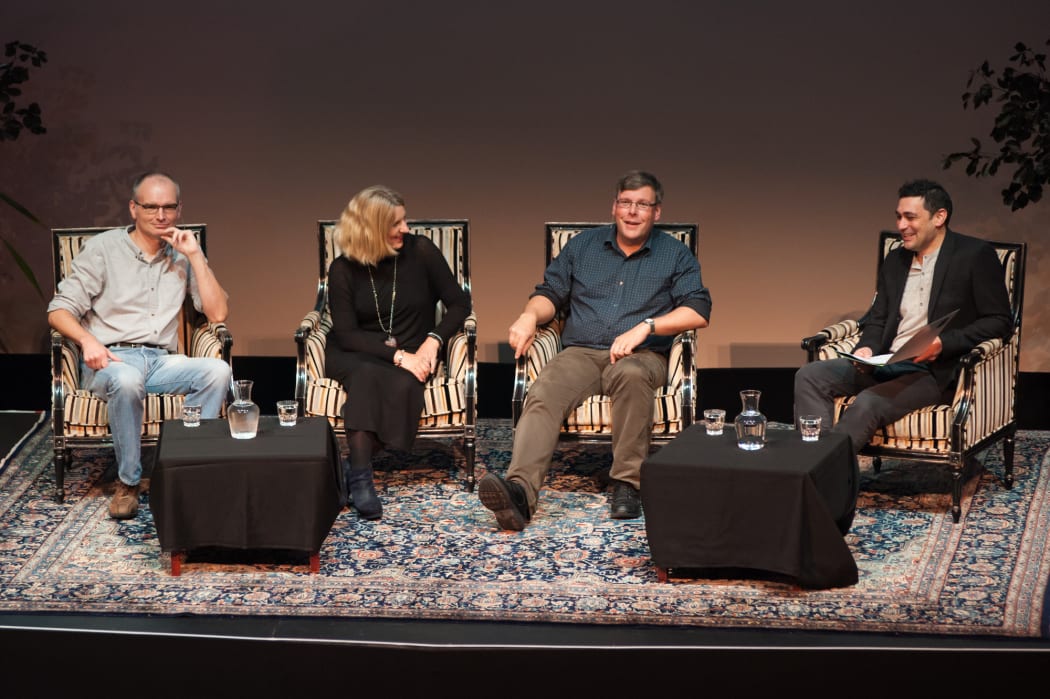"We couldn’t understand any aspect of human biology without starting the Human Genome Project and having the landscape in front of us of what we didn’t know. That’s for humans, but it applies to all other species.”

Geneticist and BBC broadcaster Adam Rutherford. Photo: Supplied
Twenty years ago, a bacterium that causes meningitis became the first living organism to have its complete genome sequenced. It was quickly followed by baker’s yeast, a nematode, fruit flies and, within less than a decade, chimps and humans.
Today we have not only our own genome, but that of our closest evolutionary relatives, the Neanderthals, and those of hundreds of animals and plants, including chickens, sheep and onions.
This “genomic revolution” has amassed an enormous amount of data and the challenge now is to make sense of it, says geneticist and BBC broadcaster Adam Rutherford.
“Genomes are only useful in comparison to others. One genome is a whole bunch of information about genes, but once you have two, you have more than double the amount of information because you can compare them."
He says we’re generating more data than we can process at the moment, but that only means that we have to “create better ways of curating that data ... so that the genomes become resources that are useful”.
Dr Rutherford has just completed the Gene Genie series of talks throughout New Zealand to discuss how genomics and new gene editing technologies are changing the way we think about medicine, agriculture, conservation and even our own evolutionary relationship with other human species.

Adam Rutherford, right, in discussion with University of Otago geneticist Peter Dearden, Susan Morton, Director of the University of Auckland Growing Up in New Zealand study, and Colin Gavaghan, Director of the New Zealand Law Foundation Centre for Law and Policy in Emerging Technologies. Photo: New Zealand Festival
As the techniques to decipher ancient DNA have improved in step with our ability to decode complete genomes, we can now compare living species with those that have become extinct, often many thousands of years ago. That, he says, could lead to a “colossal” reshuffling of our understanding of evolutionary relationships.
Recently, ancient DNA helped researchers to clarify the evolutionary origins of the kiwi, showing that its closest relation is the long extinct elephant bird from Madagascar.
In a similar way, genomics and ancient DNA has “upended human evolution”, he says, transforming our understanding of how we relate to our extinct fellow human species.
“It has radically transformed the relationship between the humans that have existed over the last 50,000 years, to the extent that there is a very reasonable argument to make that Neanderthals were not a separate species from Homo sapiens. There were sort of a proto species that never managed to grow to the level needed to survive into the future.”
The sequencing of the Neanderthal genome has revealed "which bits we have inherited from interbreeding with them, and what they code for, including Diabetes Type 2, Lupus, addictive behaviour, Crohn’s Disease, and on the plus side, stronger skin and hair."
The genetic evidence that we have interbred with Neanderthals has also pushed back the dates for when early Homo sapiens made their way out of Africa and into Siberia.
“We have genomic information which says that Homo sapiens, our ancestors, were in Siberia almost 30,000 to 40,000 years earlier than we have physical remains for us, bones, the traditional form of palaeo-anthropology.”
Saving the rare, resurrecting the dead
The successful sequencing of hundreds of animal genomes has allowed scientists to improve conservation approaches, but also to consider the possibility of bringing some species back from extinction.
The genome of a mammoth has been sequenced, opening up the theoretical option of recreating it, with the help of an elephant as a surrogate. But Dr Rutherford says the difficulties of actually doing so remain too challenging, for now.
“The practicalities of turning that genetic information into a living organism are, as far as I can make out, insurmountable right now. It would be an enormous undertaking to actually do it, and that’s not even accounting for the question of ‘Should we do it?’. What would be the point of cloning a mammoth?”
He says a better way of spending money and using technological advances is to help preserve the species that are struggling to survive.
“If through human actions we allow species to go extinct, I think that is a black mark on humanity’s record and we should do everything we can to prevent that from happening.”
The kakapo genome project is an example of technology being put to good use, he says.
“In term of conservation, one of the key things you can look at in a species is how much genetic diversity there is. It gives you an indication of the species’ robustness against extinction.”
Recently, conservationists and geneticists launched a crowd-funded project to sequence the genome of all 125 living kakapo, which “is going to provide a wealth of information on what happens when a species goes through a genetic bottleneck, when its population has become so small that there was very little genetic diversity”.
How much of you is you
Genes make up only about 2 per cent of our DNA. The rest does not code for functional proteins, but has other functions in the control of gene expression and as structural support. As much as 8 per cent of our DNA may well have been deposited in our genome by viruses, which infected our early ancestors in the distant past without causing any harm. Instead, the viral DNA was incorporated into ours.
Along the long road of evolution, other organisms may have also left their genetic mark.
“In the first billion years of life on Earth, our planet was populated exclusively by single-celled organisms, bacteria or their cousins archaea. Those guys do things that complex life can’t do, which is that they interchange genes between mature cells. Bacteria and archaea can swap genes effectively willy nilly.”
With such free-flowing exchanges of genetic material at the start of life on Earth, Dr Rutherford says it is time to let go of the idea of an evolutionary tree, with clearly marked branching points between species. Instead, it’s a “thicket, a tangled bank” or network of connecting points, which genomics will help to untangle.

